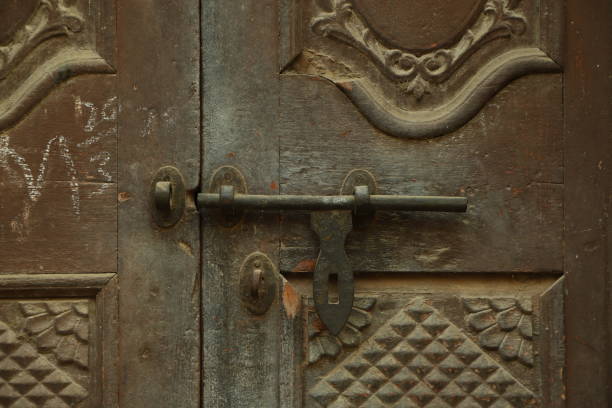
My parents are no longer there now, and I know that what they faced remained in their stories but still a Sindhi household has not changed. We still value and feel proud of our heritage, culture and language.
Rekha Lalla
Since I have opened my eyes or started understanding my surroundings, I have heard stories from my grandparents of how they struggled and crossed Pakistan borders and started their life here in India. The stories of their survival. My kids will not be fortunate enough to know those stories but I could draw also how their houses were, what positions they had in society in Karachi, Sukkur, Sindh & Quetta. How they used to live in a big household with a joint family system where all males used to work and women used to cook on a Chulha with their Cooking Timings turns fixed by the Mom in law.
Story 1- Who all were there in their family? As when they reached India they were only with their kids. My Grand Mother had a huge family of 30people with 6 married couples. Each couple had 2–5 kids. The entire household was controlled by my Grand Mother’s Mother in Law. She would give duties to all daughter in law. And she would manage and work like a supervisor taking care of everyone. Near Chulha was a big Peetal box where rotis were kept always in case someone is hungry. Sabzi and Dal is made early morning and six tiffin were packed for all males. At night the servants would come to sway the cloth fans hanging on in each rooms the string was always outside the room. They were paid monthly basis. There was no electricity so no fans. My Dadi (My grandmother) used to apply coconut oil or mustard oil to keep the mosquitoes away. The only day she used to wait was of Thadri. It’s when she enjoyed as they used to cook the Lolas, Dabri, Vegetables fried and Chautha for three days and keep them for three days. Thadri is a Sindhi festival where Sindhis consume cold food for three days to honor Sitala Mata. Later for three days no one was allowed to touch the Chulha. So my Grand Mother and her sister-in-law would play chess, sing and would dance on Sindhi songs. My Grand Mother remembered this time fondly, that was the only time she used to enjoy the most.
Story 2- What was their life in Pakistan?-My father who was only 10 year old remembered that he used to bunk his school and cross the Sindhu River to meet his Nani-(Maternal grandmother).His Nani used to give him 4 Aana at that time. Of the 4 aana he would buy mutton and bun from Nannu Nanwai and he would explain in details how nanwai’s would compete against each other that they have got such a rich customer who has 4 aanas. As a kid he was very proud of his Nani and the status he used to enjoy.
Story-3- How they travelled from Pakistan to India?- My Dadi kept all her belongings safely buried under the bed she thought she would return to her house in Sukkar. My Dadi took a train so she reached Jhansi, I really wonder how & why? But my Nani was intelligent she took all gold coins made pakoras and put in a big basket, if any one ask too she would show the pakoras. Her kids feed on these pakoras on their way to Mumbai where they reached on ship.
Story-4 How they started their life in a Camp?-It was Kalyan Camp for my Nani and my Dadi it was Jhansi. Kids were small and two of them were born in Free India. She had a tough time looking after her family. Her 8 Brother and sisters were lost in transition. She met her brother after an obituary appeared in Times of India after 40 years. He was in Ahmedabad for all these years. My Nani started her journey alone as soon after partition my nana expired. She managed 6 kids. Brave woman!!
But as stories can’t change the present they had to work from zero to start their living which was the harsh reality they faced. Whatever they had they left with only stories to tell to their kids, so my memory of my childhood is stories of my Grandmother and my father’s.
All Sindhi household are connected with Sindhi Panchayat where they all meet on their special Sindhi occasions and for matrimonial alliance as well. Sindhi households get their supply of special Sindhi papad, Kheecha and Singar from Sindhi households which regularly put up their shops in Sindhi Panchayats. We also celebrate Julelal Chaliya, a 40 days function where all Sindhi household meet. We have our special and exclusive halwais which make our sweets like-Singar ki methai, Ghehar, Halwa etc. We realize the hardships we have faced and we all are somewhat connected as our parents meet and talk they would exchange which part of Pakistan you have come from is the first question they ask. So even during our marriages we decide on doing 50% each party. Girl’s parents and Boy’s parent agree on payment of 50% each. Usually we marry in our own caste. It was rare that my father would ever agree and marry me in any other family other than a Sindhi that too he would inquire from which part of Pakistan the boy’s family is. They are always proud of their legacy.
My parents are no longer there now, and I know that what they faced remained in their stories but still a Sindhi household has not changed. We still value and feel proud of our heritage, culture and language.
_____________
Courtesy: Medium (Published on March 29, 2021)